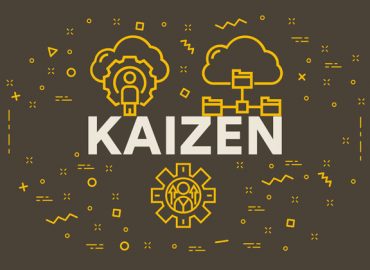Lean and Six Sigma training plays a critical role in enhancing employee productivity by equipping individuals with the necessary skills to improve decision-making and problem-solving. By fostering a culture of continuous improvement, employees develop the ability to identify inefficiencies, streamline processes, and drive operational excellence. Through structured training, organisations empower their workforce to take a data-driven approach to problem-solving, ensuring sustained productivity gains and higher overall efficiency.
Enhancing Decision-Making Skills
One key advantage of Lean and Six Sigma training is the improvement in employees’ decision-making capabilities. The methodologies focus on utilising data analysis, process mapping, and statistical tools to make informed decisions rather than relying on intuition. This approach minimises errors, enhances efficiency, and ensures that resources are utilised optimally.
Employees trained in Six Sigma methodologies learn to apply tools such as root cause analysis (RCA) and the DMAIC (Define, Measure, Analyse, Improve, Control) framework. These tools enable individuals to assess problems systematically, identify their underlying causes, and implement effective solutions. As a result, employees make well-founded decisions that contribute to organisational success.
Strengthening Problem-Solving Abilities
Problem-solving is a crucial competency in any organisation, and Lean and Six Sigma training provide employees with structured methodologies to tackle challenges effectively. Employees become more proactive in resolving issues before they escalate by adopting a systematic approach to identifying inefficiencies and bottlenecks.
Techniques such as Kaizen (continuous improvement) and Poka-Yoke (error-proofing) empower employees to address problems at their source, leading to long-term solutions rather than temporary fixes. This proactive mindset reduces operational waste and fosters innovation and efficiency across various business processes.
Steps for Implementing Lean and Six Sigma Training
To successfully integrate Lean and Six Sigma training into an organisation, the following steps should be followed:
- Assess Organisational Needs
- Conduct a thorough analysis to identify areas where process improvements are needed.
- Determine the key pain points and inefficiencies within operations.
- Align training goals with business objectives to ensure relevance and impact.
- Select the Right Training Program
- Choose a structured training program that covers Lean principles, Six Sigma methodologies, and their practical applications.
- Different certification levels (Yellow Belt, Green Belt, Black Belt) are offered based on employees’ roles and responsibilities.
- Engage Leadership and Management
- Ensure senior management is committed to Lean and Six Sigma principles to drive adoption.
- Encourage leaders to act as mentors and facilitators of change within their teams.
- Deliver Practical and Interactive Training
- Provide hands-on training sessions that include real-world case studies and problem-solving exercises.
- Incorporate tools such as process mapping, statistical analysis, and performance measurement techniques.
- Encourage Collaboration and Teamwork
- Promote cross-functional collaboration to break down silos and encourage collective problem-solving.
- Foster a culture of knowledge sharing to enhance overall learning and implementation effectiveness.
- Measure and Monitor Progress
- Implement key performance indicators (KPIs) to track the impact of Lean and Six Sigma initiatives.
- Conduct periodic reviews and feedback sessions to refine strategies and address challenges.
Maintaining Lean and Six Sigma Principles for Long-Term Productivity
Once Lean and Six Sigma methodologies are implemented, sustaining their benefits requires ongoing commitment. Organisations can maintain these principles by:
- Regular Training and Refresher Courses: Continuous learning opportunities help employees stay updated on best practices and evolving methodologies.
- Embedding Continuous Improvement into Workplace Culture: Encouraging employees to identify inefficiencies and propose improvements fosters a proactive approach to productivity enhancement.
- Recognition and Incentives: Acknowledging employees’ contributions to process improvements motivates further participation and commitment.
- Leveraging Data for Decision-Making: Consistently using data-driven approaches to assess performance ensures that productivity improvements are maintained and further refined over time.
Conclusion
Lean and Six Sigma training significantly transforms employee productivity by enhancing decision-making and problem-solving skills. By providing employees with structured methodologies and practical tools, organisations empower their workforce to drive continuous improvement and operational excellence. A well-planned implementation strategy and sustained commitment ensures that Lean and Six Sigma principles become ingrained in the organisational culture, leading to lasting productivity gains and business success.
Contact us today to learn more about our Lean Six Sigma training programs and to empower your team with Lean Six Sigma training. Our expert trainers are dedicated to helping your employees unlock their full potential and drive individual and organisational success.
What is DFSS? Design for Six Sigma is used to perfect products and processes before...
What is DOE? In general usage, design of experiments (DOE) or experimental design is the...
What is coaching? Coaching is a cyclical process of elevating the other persons’ awareness of...
Lean Six Sigma is a powerful method for improving existing products, processes and services. One...
Introduction In our lean six sigma projects, too often we spend all our time on...
What is a Kaizen Blitz? Kaizen definition has been Americanised to mean “Continual Improvement.” A...
Overview Layout planning is one of the most important aspects of Lean manufacturing. In some...
As global competition continues to grow, the pressure to improve becomes more and more intense....
What is SMED? SMED is the term used to represent setup time and is often...
Lean Six Sigma projects can lead to a rewarding experience and immense benefits for an...
Introduction Value Stream Map (VSM) is a diagram of every step involved in the material...
Attending our Public classroom physically or joining the team virtually from anywhere, according to the training calendar.
A flexible self-paced training for busy people along with our support by a dedicated coach, to solve the disadvantage of one-way online training
Delivering flexible and tailored training for your team and at your premises as a cost-effective solution for your team.













